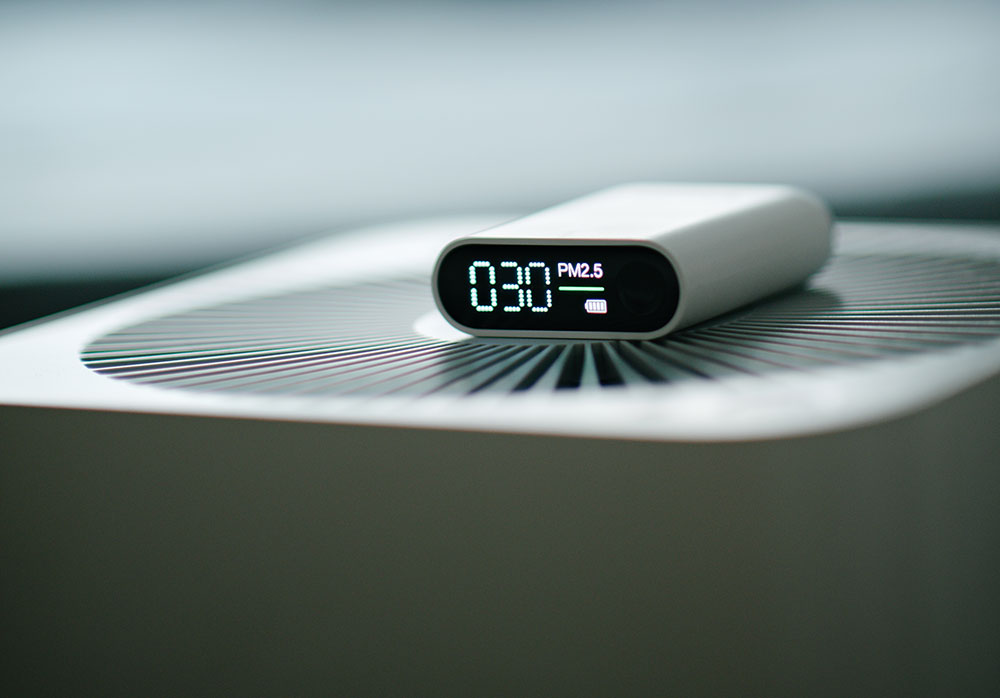Have you ever wondered what the numbers and symbols on your air purifier display mean? Understanding these can help you make the most of your device, ensuring the air in your home is as clean as possible. In this article, we’ll break down the common indicators and numbers you might find on your air purifier display, so you can breathe easy knowing you’re using your device effectively.
Why Understanding Air Purifier Displays is Important
Air purifiers are essential for maintaining good indoor air quality. However, to get the best performance from your air purifier, it’s crucial to understand what the various numbers and symbols on the display mean. This knowledge allows you to monitor air quality and adjust settings to improve the effectiveness of your device. By understanding these indicators, you can ensure that your air purifier is always operating at its best, providing you with the clean air you need for a healthy home environment.

Common Indicators and Numbers on Air Purifier Displays
Air Quality Index (AQI)
The Air Quality Index is a common feature on many air purifiers. It shows the current air quality in your room on a scale, often color-coded for easy understanding. The AQI measures the concentration of pollutants in the air, including particulate matter (PM), ground-level ozone, carbon monoxide, sulfur dioxide, and nitrogen dioxide. Here’s a breakdown of the AQI scale:
- 0-50 (Blue): Good air quality
- 51-100 (Yellow): Moderate air quality
- 101-150 (Orange): Unhealthy for sensitive groups
- 151-200 (Red): Unhealthy
- 201-300 (Purple): Very unhealthy
- 301-500 (Maroon): Hazardous
Understanding the AQI can help you make informed decisions about using your air purifier. For instance, if the AQI is in the unhealthy range, you might want to increase the purifier’s fan speed or consider running it continuously until the air quality improves.
PM2.5 Levels
PM2.5 refers to particulate matter smaller than 2.5 microns. These tiny particles can penetrate deep into the lungs and even enter the bloodstream, posing significant health risks. Many air purifiers display the concentration of PM2.5 particles in micrograms per cubic meter (µg/m³). Generally, lower numbers indicate better air quality:
- 0-12 µg/m³: Good
- 12.1-35.4 µg/m³: Moderate
- 35.5-55.4 µg/m³: Unhealthy for sensitive groups
- 55.5-150.4 µg/m³: Unhealthy
- 150.5-250.4 µg/m³: Very unhealthy
- 250.5+ µg/m³: Hazardous
Monitoring PM2.5 levels is crucial, especially if you live in an area with high pollution or have health conditions such as asthma or allergies. By keeping an eye on these numbers, you can adjust your air purifier settings to ensure the air you breathe is as clean as possible.

Filter Life Indicator
This feature shows the remaining life of your air purifier’s filter, usually displayed as a percentage. Regularly checking this indicator ensures you replace the filter on time, maintaining the efficiency of your air purifier. Most air purifiers have a filter replacement indicator that will alert you when it’s time to change the filter. Ignoring this indicator can lead to reduced performance and increased energy consumption, so it’s essential to replace the filter as recommended by the manufacturer.
Fan Speed Settings
Many air purifiers allow you to adjust the fan speed, which can be shown on the display. Higher speeds typically mean more air is being filtered, but this can also increase noise levels. Most devices offer multiple fan speeds, ranging from low to turbo mode, allowing you to choose the appropriate setting based on your needs and the current air quality.
Timer Settings
Some air purifiers have a timer function, allowing you to set the device to run for a specific duration. This feature can help save energy by running the purifier only when needed. For example, you can set the timer to run the purifier for a few hours before bedtime, ensuring that the air in your bedroom is clean and fresh as you sleep.
Additional Indicators
Some advanced air purifiers come with additional indicators and features. These may include:
- Temperature and Humidity Sensors: Monitoring indoor climate conditions.
- VOC (Volatile Organic Compounds) Sensors: Detecting harmful chemicals in the air.
- Sleep Mode: Reducing noise and display brightness for nighttime use.
- Auto Mode: Automatically adjusting settings based on real-time air quality data.
How to Use This Information
Understanding these indicators helps you optimize your air purifier’s performance. For instance, if the AQI or PM2.5 levels are high, you might want to increase the fan speed or check if the filter needs replacing. Regularly monitoring these numbers ensures you’re always breathing clean air. Here are some practical tips on how to use this information:
- Monitor Regularly: Check the display frequently to stay informed about your indoor air quality.
- Adjust Settings: Use the information to adjust fan speed, activate auto mode, or set the timer.
- Maintain Filters: Keep an eye on the filter life indicator and replace filters as needed.
- Respond to Alerts: Pay attention to any alerts or warnings from your air purifier, such as high pollutant levels or filter replacement reminders.
Conclusion
Understanding the numbers and indicators on your air purifier display is crucial for maintaining good indoor air quality. By keeping an eye on these metrics and adjusting your settings accordingly, you can ensure that your air purifier is working effectively, providing you with the cleanest air possible. Regular monitoring and maintenance of your air purifier will help you create a healthier living environment for you and your family.
FAQs
What do the numbers on my air purifier mean?
The numbers typically represent air quality metrics such as AQI or PM2.5 levels. They indicate the current state of your indoor air and help you adjust the purifier’s settings for optimal performance. Understanding these numbers allows you to take proactive steps to improve air quality, such as increasing fan speed or replacing filters.
What does PM2.5 mean in an air purifier?
PM2.5 refers to particulate matter that is 2.5 microns or smaller. High levels of PM2.5 can be harmful to your health, making it important to monitor and reduce these particles in your indoor air. By understanding PM2.5 levels, you can use your air purifier more effectively to maintain a healthy indoor environment.
What is a good air purifier number?
A good air purifier number for AQI is between 0-50, indicating good air quality. For PM2.5, a level below 12 µg/m³ is considered good. These numbers suggest that the air in your home is clean and safe to breathe.


